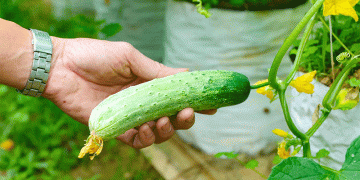In the small village of Khedamath (K) in Madhubani district, a local farmer, Birju Mandal, is demonstrating the potential of pumpkin farming to revolutionize rural incomes. On just 16 kattas (approximately 0.53 acres) of land, Mandal is harvesting between 130 and 150 pumpkins daily, generating over INR 6,000 in revenue per day. This has significantly strengthened his financial standing and created a model for other farmers to emulate.
Birju Mandal’s success did not come by accident. He attributes it to precise farm management, timely sowing, and the use of effective farming techniques. He planted pumpkin vines in July, which matured in just one month, with the first harvest beginning in August. By September, the vines were producing pumpkins consistently, allowing for regular daily harvests. The key, according to Mandal, lies in proper irrigation, pest control, and the judicious use of fertilizers to ensure the vines are protected from insects and diseases.
Economic Breakdown of Pumpkin Farming
Mandal’s daily revenue is impressive, but like all farming, it comes with expenses. Half of the income is reinvested into farming inputs like fertilizers, pesticides, and labor costs, leaving him with a net profit of INR 3,000 per day. Despite the operational costs, Mandal’s daily savings have exceeded INR 3,000, making pumpkin farming a reliable and lucrative source of income.
Pumpkin farming offers several advantages over traditional crops like rice and wheat, particularly in terms of growth cycles and market demand. With a growth period of only 50 to 60 days, pumpkins allow for multiple harvests within a single growing season. This short cycle helps farmers respond quickly to market demands, and because of the high demand for pumpkins, especially during festive seasons, the profitability is substantial.
The Role of Market Awareness and Timing
One critical lesson Mandal’s success teaches is the importance of market awareness. Farmers need to time their crops to coincide with peak demand periods, such as the festive season when pumpkin prices rise. Market access is another crucial factor—having a strategy to sell directly to local markets or retailers can reduce dependency on middlemen and increase profitability. Farmers should also focus on the quality and appearance of the pumpkins, as these factors heavily influence market prices.
Simple and Effective Techniques for Success
Birju Mandal highlights that the techniques used in pumpkin farming are neither complex nor resource-intensive. The primary requirements are timely irrigation, the correct application of fertilizers, and attentive pest management. Additionally, he stresses the importance of crop monitoring and periodic field inspections to detect and address any issues early.
Mandal’s success in pumpkin farming has inspired other local farmers to consider diversifying their crops. While many still focus on traditional grain farming, more are beginning to see the potential in vegetables and specialty crops like pumpkins. His story is a strong example of how small-scale farmers can increase their income and reduce economic vulnerability by diversifying their farming portfolios.
The case of Birju Mandal’s pumpkin farm in Madhubani demonstrates the significant profit potential of pumpkin farming, especially when managed efficiently. By investing in simple yet effective farming practices and staying attuned to market conditions, farmers can generate substantial profits and create a steady income stream. With the right approach, other farmers can replicate this model, contributing to greater agricultural productivity and economic stability in rural areas.
































